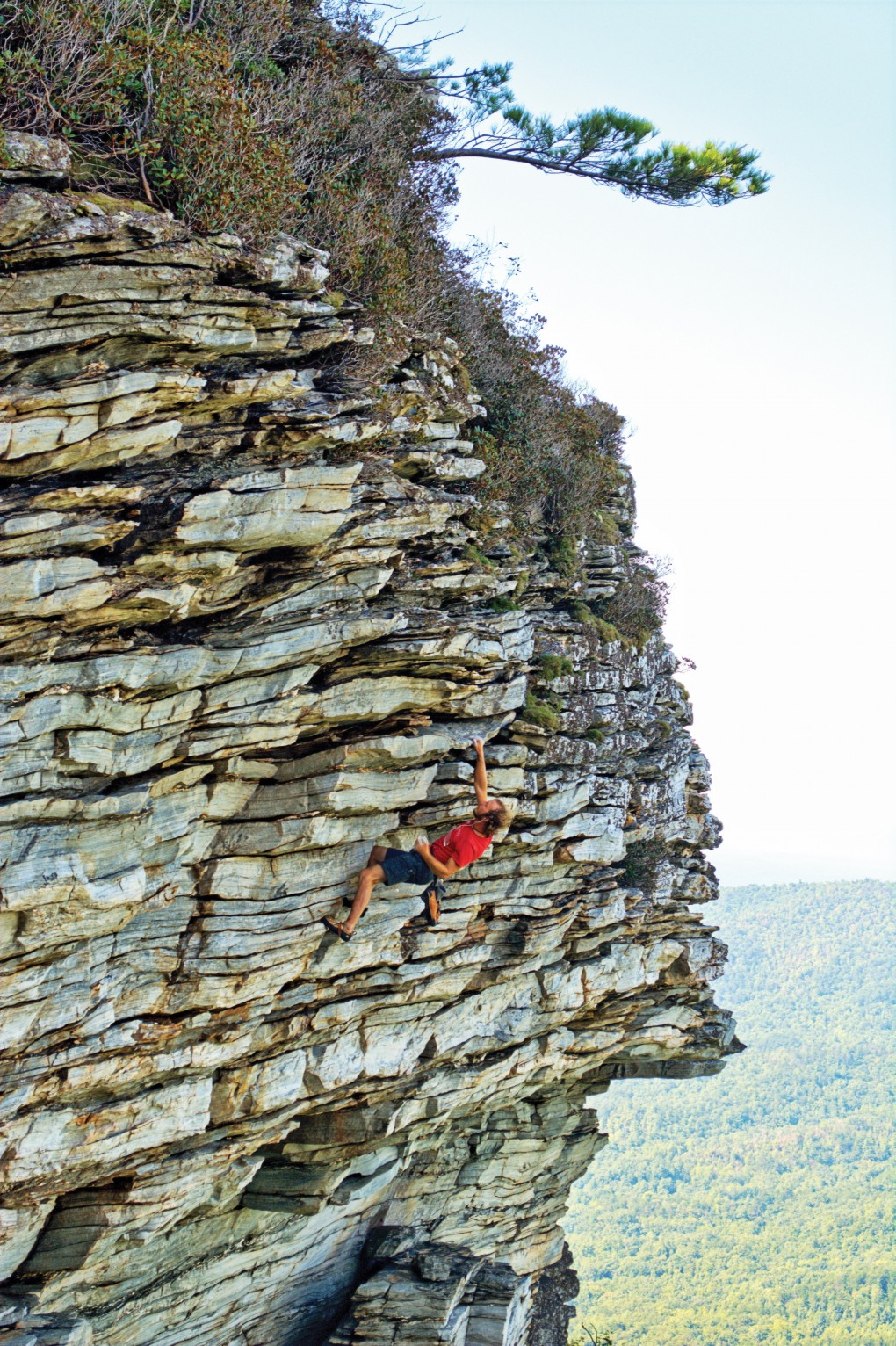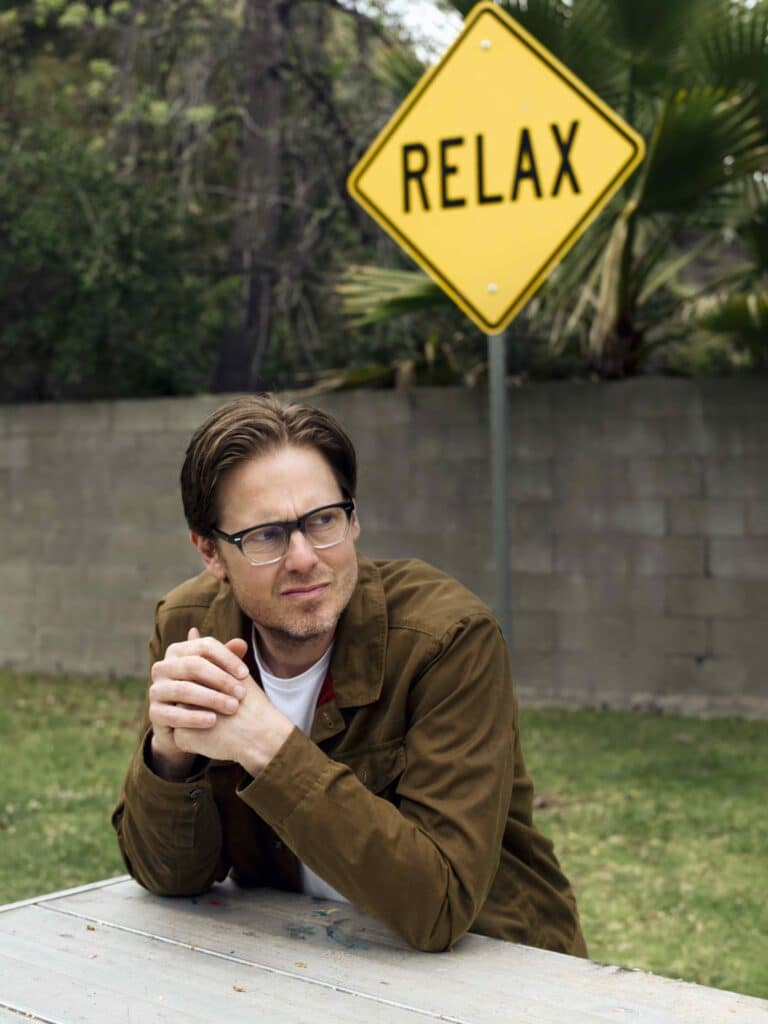UPDATE: Free soloist Austin Howell died Sunday after falling more than 80 feet from Shortoff Mountain in Burke County, officials said.
Burke County Emergency Services Director Mike Willis said rescue crews were able to reach the victim by rappelling down the mountain about 90 minutes after the call for aid was made. Other climbers were performing CPR on the victim.
Authorities said Howell was free climbing in one of the most challenging portions of the Linville Gorge.
The U.S. Forest Service is investigating the incident.
Austin Howell has been known to climb in a top hat, naked, and without a rope, but he’s also frequented many hospital beds. What’s keeping Austin psyched on climbing?
Since the dawn of rock climbing, and throughout its bruised and bloody history of improbable speed ascents and unprecedented tragedy alike, the question ‘why?’ has never been far from the minds of climbers. Why climb in the face of danger? Why risk life and limb for the sake of a summit? Why try when you could die?
For 28-year-old Atlanta-based free soloist Austin Howell, those questions hit close to home. Since embarking on his now decade-long relationship with climbing, Howell has been more than bruised and bloody, and on more than one occasion.
In 2008, it was a broken back. A few years later, shattered ankles. Then, just last year, Howell fell 20 feet headfirst while climbing The Nose, fracturing his skull, wrist, and five neck vertebrae. To the average climber, any one of those injuries might be sufficient reason to stop climbing altogether, but Howell is not your average person, nor is quitting climbing an option.
Born and raised just outside of Houston, Howell has always had an affinity for heights. As a child, he would take to the trees during hide-and-seek, proudly perched on a limb for hours while his friends searched tirelessly. But it wasn’t until Howell attended the University of Houston that he was formally introduced to the sport that would change his life.
“One of the girls that worked at the [indoor] wall explained what routes were and tied me in,” Howell remembers. “I got skunked 15 feet off the ground, not because it was impossible, but because I didn’t know what to do. At that point, it became a puzzle and it needed solving. That’s when I got hooked.”
Though Howell was in school to study electrical engineering, his interests quickly evolved from the academic to the athletic. When he wasn’t in class, he was on the wall. When he wasn’t on the wall, he was pouring over YouTube videos of his spirit animal, Tommy Caldwell. On his third day of climbing, Howell was already projecting 5.8 routes at the gym. The challenge of the puzzle, part mental, part physical, became all-consuming.
“Hans Florine said it best,” Howell says, quoting the famous American speed climber: “The only thing better than climbing is more climbing.”
Just two years into his climbing career, Howell was forced to reevaluate that logic. While projecting a new gym route called Final Destination, his belayer failed to catch a fall, causing him to land back-first from a height of 35 feet. Yet it wasn’t the broken T11 and T12 vertebrae, or the four ensuing months of back brace sedentary living, that made Howell doubt his passion. It was his mother.
“Basically, she told me I could keep climbing or keep having family support for college,” he says. “As you can see, I’m still climbing.”

The perceived risks of climbing became such a source of tension between Howell and his mother that their relationship, especially after Howell quit school, crumbled beneath the weight of ‘what if.’ For Howell, the choice was a no-brainer. The courage to see it through, however, was on par with leading a runout 5.12 trad route.
“When you find something that gives you that deep of a sense of peace, why would you let it go?” he says. “For most people, if they’ve really found something that’s meaningful in their lives, the choice…is going to be really obvious. The trick is admitting it.”
The next five years for Howell were a whirlwind of bloody fingers, burritos, and truck bed camping. From Hueco Tanks to Looking Glass, and a side trip to Germany, Howell targeted the best crags to push his limits. He was living the quintessential dirtbag dream. Even without the college degree, Howell found success in climbing Telecom towers to fund his fun, which eventually landed him in the Southeast.
Meanwhile, Howell was slowly coming to grips with an identity he never expected to embrace—that of a free soloist. His life until then had taken some unexpected twists and turns. But the more he climbed, the more he trained, and the more he trained, the harder he climbed. Soon, Howell’s baseline for “easy” was a solid 5.10 trad route. Free soloing, it seemed, was the logical next step.
“Once upon a time, there was only climbing. We didn’t have safety equipment. There was no sport, there was no trad, there was no solo. There was just climbing,” he says. “Whenever I’m climbing easy stuff, placing gear gets really annoying and slows me down. It takes me out of the moment.”
His inquisitive and analytical nature earned him the nickname The Professor. Having an activity that quiets the mind and forces the present is imperative to his being, Howell says. No longer a puzzle of mind over body, climbing became first and foremost an activity of the spirit.
“Whenever you’re doing something incredibly hard on the wall, everything disappears,” he says. “It’s just you and this handhold, this foothold, this particular way to twist your body. When you’re really at your limit, your mind has to become a complete void. You just become the movement.”
Oftentimes, Howell and his meditative but quirky personality are met with apprehension at the crag. Fellow climbers, unaware of Howell’s values, are quick to judge. They see a young and seemingly reckless dude in a top hat casually sending 80-foot, 5.10 trad routes, with just two pieces of protection. When Howell eliminates the rope altogether, the judgments worsen.
“I frequently draw a mixed bag of reactions, from genuine concern to horror, rage, elation, contempt and simple confusion,” Howell writes on his blog, Dreaming of Gnar. “Well-intentioned folks try to point out all the possibilities that could lead to an accident: there could be loose rock, there could be bugs, there could be wet rock.”
Be that as it may, Howell argues that roped climbers face the same situational uncertainties that free soloists do. A slipped foothold doesn’t necessarily lead to a whipper, just as the mere presence of a belayer won’t ensure you don’t hit the deck if you do fall. In fact, Howell says, were it not for the false pretense of safety under which modern day society operates, fewer climbers would put their faith in gear over skill.
“Your first fundamental piece of protection [in climbing] is your fingers,” Howell says. “We have this safety culture, but really, you don’t have any safety protection beyond your ability to make competent decisions.”
Behind Howell’s wide eyes and wiry hair, the wheels never stop turning. Though he has racked up a number of onsite solo ascents 5.10 and under (including an 11-pitch tour of Shortoff Mountain, totaling 4,500 feet of vertical climbing), most free solo attempts in the 5.11+ range require countless roped laps. Each time Howell stands at the base of a potential solo, if he’s not calculating his mojo, he’s adding up hours spent on the campus board in his basement. Thorough, humble, and honest, Howell knows when to back off a solo, and when to power through.
“I hate stressful climbing,” he says. “Being scared out of your mind while climbing is not a pleasant experience.”
Unlike the vast majority of climbers, Howell experiences fear not from free soloing but from leading trad. Remember the fractured skull, wrist, and neck vertebrae? Howell wasn’t free soloing The Nose when he fell headfirst—he was roped in, well-protected, and seemingly on top of his game.
“We’ll never know what happened,” he says. “The first thing that went wrong was it was wet, which forced us to aid climb instead of free climb. Then a piece of aid gear pulled out under body weight. Then, an additional piece probably pulled out as well. Then I hit the ledge.”
Fractures aside, Howell also lost the hearing in his left ear as well as his internal equilibrium. He spent two days in the intensive care unit, and nearly another week in the hospital unable to comprehend what had happened, or why the world spun uncontrollably whenever he tried to sleep.
“Every time I closed my eyes, it was like getting tossed into one of those paint can shakers at Home Depot,” he remembers.
The doctors, unsurprisingly, told Howell there was no foreseeable future in which he would ever be able to climb again. The average person suffering from so many fractures and head trauma simultaneously could expect to be bedridden for months before seeing any signs of progress. But Howell is not the average person, nor is quitting climbing an option.
Just one month after the accident, he was top-roping 5.6 in the gym. Now, only a few months shy of the year anniversary, Howell is stronger than ever. Though the injuries initially set him back physically, he credits the incident to a much-needed change in attitude toward climbing, and toward his answer to the question Why?
“I once was completely obsessed with hard routes, chasing the next number and progressively seeking out harder and harder climbs to test myself and project them into submission,” he writes, whereas now, he understands that, “[i]t’s not about climbing hard, trad, sport, boulder, multi-pitch, big wall, this grade, or that. It’s about having the absolute most fun you can have. [T]hat’s how you know you’re doing it right.”
You likely won’t see Howell on the next climbing-centric “60 Minutes” feature. He’s too busy having fun to worry about the fame—unless, that is, it involves first natural ascents (as in naked free solos). Just last spring, EpicTV featured a video of Howell going balls to the wall on Dopey Duck, a 350-foot, three-pitch, 5.9 route in the Linville Gorge. True to his mantra, Howell admits that naked climbing is “a jackass stunt, but at least it’s a fun one.”







